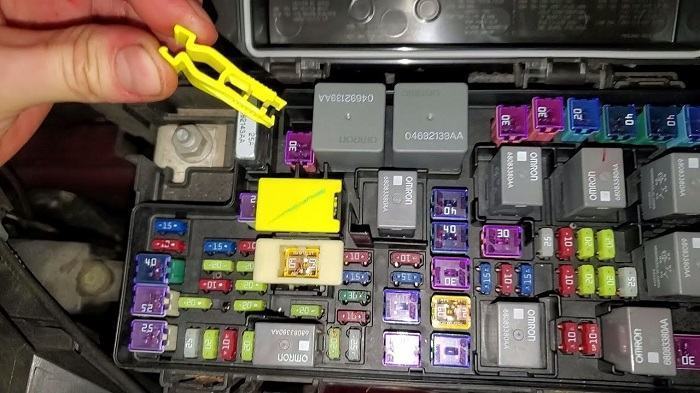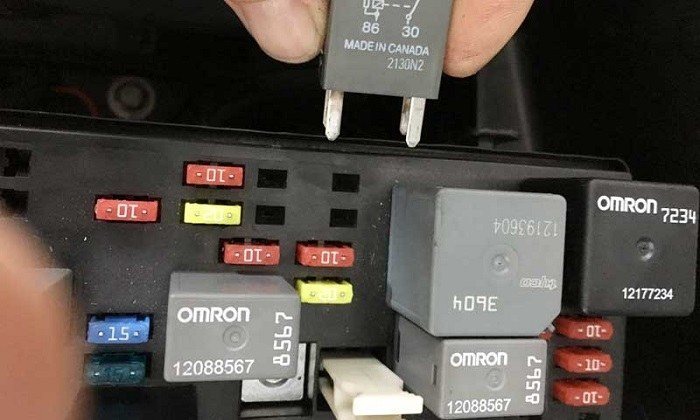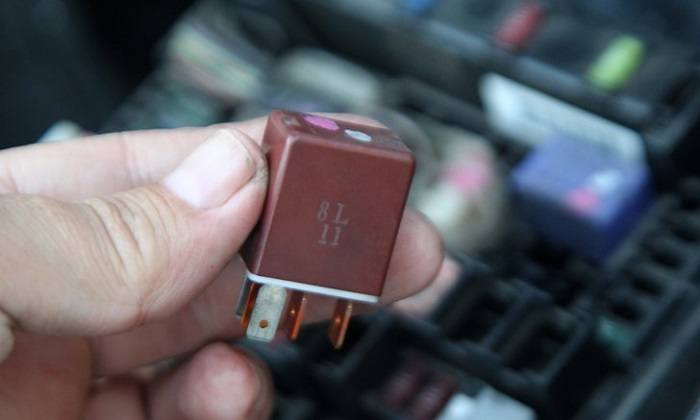by Joshua Thomas
While various things can lead to ignition issues and other problems starting the vehicle, in many instances, most of these issues can be traced back to the fuel pump relay.
A fuel pump relay is one of those small vehicle components that play a huge role in the functioning of the vehicle, and hence a bad or failing one can have adverse implications.
Many motorists, including the more experienced ones, still do not have an idea of what the fuel pump relay is or even where it is located. But, here we aim to make this clear by explaining all this and also highlighting the symptoms of a failing one and how to check and replace it.
Contents

A fuel pump relay can be best described as a small plug-like unit that is mostly enclosed in a plastic case. This unit will typically be made up of numerous sprockets on one side, which is then clipped on your vehicle's ignition system.
The fuel pump relay will only be engaged in the vehicle start cycle and a faulty one will make starting then car a harder and a longer process.
This small unit is typically controlled by the powertrain module or ignition, and it is primarily tasked with maintaining the correct voltage supply to the fuel pump to ensure it functions smoothly and hence makes the vehicle quick and easy to start.
Because the fuel pump relay is what controls the power that goes to the fuel pump, any problems with it will often cause the latter to misbehave, which is what results in the starting issues. And this stems from the fact that the fuel pump will require electricity to function.
Note: The fuel pump relay will not be solely responsible for starting the vehicle's engine, for some models, the vehicle can still start using the remaining oil in the galleys.
In a situation where the oil is thick enough and the vehicle is cold, the engine can start in just a few minutes with no assistance at all from the fuel pump relay.
It is important to know where the fuel pump relay is located in your vehicle as this will ensure you have an idea of where to look when you suspect you have an issue with this unit.
Although the fuel pump relay will come in different shapes and sizes, most will typically have 4 or 5 electrical terminals and will be a small plastic box located in the main fuse box that is usually under the hood and near the front of the vehicle.
However, some vehicles may have a smaller fuse box inside the vehicle under the steering column. But, to locate the fuel pump relay, you will only need to pull out the fuse box no matter where it is located and check the diagram that is often printed on it.
A fuel pump will either be colored gray or green and if by any chance you still cannot locate it on your fuse box, you should refer to your vehicle's manual.

A faulty fuel pump relay often results in fuel pump issues that affect the drivability of the vehicle. But, like any other car problem, a bad one will produce different symptoms that should help you diagnose and fix the issue in a good time.
Here are some of the most common symptoms of a bad or failing fuel pump relay.
If your engine fails to start, this is a reliable sign that you have a faulty fuel pump relay. A failed fuel pump relay means that your fuel pump will not get any power, and hence your engine will not fire up.
While in some instances the engine might still crank when you turn the key, the lack of fuel means it will not be able to start.
A simple fuel pump relay replacement will be enough to solve this problem, but it is also important to remember that your vehicle failing to start can be a symptom of a wide variety of other vehicle issues.
One of the early symptoms that you have a problem with the fuel pump relay will be an engine stall.
Although stalling can be a result of many other issues such as low transmission fluid and faulty IAC valve, the fuel pump relay can also lead to power loss to the fuel pump, and hence causing then engine to stall.
If the fuel pump relay is just faulty you can still be able to restart the engine after a while, but if it is failed completely, you may not be able to start the vehicle until you replace it.
When you have a bad fuel pump relay, your vehicle might still be able to start, but the start will be delayed significantly as it will take several attempts.
The delay stems from the fact that the faulty fuel pump relay will take longer than usual to send the required voltage to the fuel pump to allow it to fire up. Also, this will often lead to erratic engine functioning after the start-up.
Besides making unusual noise the fuel pump can also be abnormally quiet when you have an issue with the fuel pump relay.
The fuel pump will typically make a buzzing noise when running, but when it is not working, it can remain silent. Hence, if you are an experienced motorist with a trained ear, you should be able to notice the lack of any pump noise as you start your engine.

Fuel pump relay replacement is more complicated than it may appear. Hence, it will be a great idea to have it done by a professional mechanic. But, for the savvy home mechanics with enough experience, it is still possible to do it as a DIY project. And here are the simple steps you will need to follow.
Directions
The first step in dealing with a faulty fuel pump relay will be to first locate and remove the old one. And while this might look like the simplest step of the process, for some motorists it can still be quite complicated, and this is more so for those that do not how it looks like or its location.
In most vehicles, the fuel pump relay will be located in the fuse box inside the engine compartment, and it is a green or gray plug-like unit.
To remove the fuel pump relay, you should first park your vehicle and switch off the engine before disconnecting the battery terminal. Next, you should locate the fuse box and then use the diagram on its cover to find the fuel pump relay, and then use needle-nose pliers to pull it out.
With the old fuel pump relay removed, now you can insert the new one, which should be quite easy if you get things right in the first step above.
Here you will only need to pop in the new unit in the same position that the original one occupied, which should be straightforward even for the inexperienced individuals as it is all about popping it in.
But, at this step, you also need to take off the fuel cap from the tank and put it back on to make sure that it makes a good seal so that it will pressurize fully and properly when you activate the fuel pump.
Even with the new fuel pump relay installed, the job is still not done as you still need to make sure it is working fine.
For this, you should first reconnect the battery terminal to power up the car. Next, turn the ignition key and listen to how the fuel pump relay reacts, and if it makes a buzz or click it should be okay.
Also, as you are turning the switch you can have someone place a hand on the fuel pump relay and see whether they can feel the buzzing or clicking motion.
In case there is no buzzing or clicking, this is an indication the fuel relay pump is still not okay and might need to be checked by a professional.
The last step, just like when fixing any other vehicle problem is to take the vehicle for a test drive to check whether the fuel pump relay is working fine and that there are also no other issues with the vehicle.
As you take the test drive, you should listen keenly to the sound that the fuel pump makes, and if it is not too silent or does not make any usual noises, it is okay now. Also, try to accelerate at both and high speeds to ensure that the fuel pump is working okay.
A fuel pump relay is a small unit in the fuse box that is tasked with ensuring the fuel pump gets the power required to keep your vehicle running. Hence, when it is faulty, the drivability of the vehicle is affected greatly and sometimes the engine might not even start.
But, besides just knowing where to find the fuel pump relay, it is even more important to know how to tell when it has issues. The good news is that the symptoms for a bad one are easy to spot, and they will include things like engine stalling and failing to start.
And when you have a bad one, you can choose to have a professional mechanic check or inspect and replace it or you can do it on your own at home by following the simple steps highlighted above.
Sources
 |
 |
 |
 |

About Joshua Thomas
Joshua Thomas just simply loves cars and willing to work on them whenever there's chance... sometimes for free.
He started CarCareTotal back in 2017 from the advices of total strangers who witnessed his amazing skills in car repairs here and there.
His goal with this creation is to help car owners better learn how to maintain and repair their cars; as such, the site would cover alot of areas: troubleshooting, product recommendations, tips & tricks.
Joshua received Bachelor of Science in Mechanical Engineering at San Diego State University.
Just Car Care